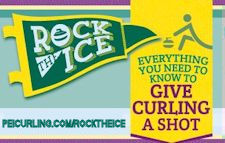(by Jonathan Brazeau)
If you’ve ever watched curling with someone who is new to the sport, chances are you’ve heard this question before: Why doesn’t the team with the hammer just keep knocking out all of their opponents’ rocks?
Well, that’s exactly how things were back in the day until a practice exercise that was created out of pure boredom revolutionized the game. Funny how that happens.
It all started back in the mid-1980s. Brothers Russ and Glenn Howard used to face off one-on-one during practice and Russ became frustrated with the predictable play between them. Once one of them was in the lead, they would just bang away the other’s rocks and win. That’s when Russ came up with a new rule to make things interesting: the first four rocks (two from each side) could not be removed from play.
Glenn Howard shoots a stone during the 2018 Humpty’s Champions Cup in Calgary. (Anil Mungal)
“Russ was always that kind of out-of-the-box thinker,” said Glenn Howard, who is a four-time world champion. “He’s always looking for different ways to make the game better and make our sport better.
Russ Howard set the wheels in motion with the “Moncton rule,” which was modified into the four-rock free guard zone. Now we’ve entered a new era with the five-rock rule, which has been implemented by the World Curling Federation across the board for all tournaments beginning this season.
Russ’ rule was altered so that stones sitting outside the house from the tee line up to the nearest hog line (the free guard zone) could not be eliminated until four rocks had been played. If a team violated this rule, their rock would be removed from play and the hit stone would return to its position. Four-rock play became the World Curling Federation’s standard starting with the 1993-94 season although Canada adopted only a three-rock rule at first until making the switch in 2002.
The four-rock rule had a generational run but as ice conditions improved and the players themselves became better over the years, it appeared to need an additional tweak to keep up with the direction the game was heading. Players can now make such precise shots to tick aside guards, keeping them in play but rendering them useless.
The Pinty’s Grand Slam of Curling, with competition director Pierre Charette leading the charge, was the first major curling organization to experiment with the five-rock rule, which not only adds an extra guard but also gives more control to the team with the hammer as they hold the power to decide whether to remove guards or leave them be. This leads to more aggressive play and gives a team behind on the scoreboard a greater opportunity to generate offence and get back into the game.
World Curling Tour operations manager Gerry Geurts has seen the way Pinty’s Grand Slam of Curling teams have handled the rule and is looking forward to the progression now that those teams can focus solely on playing that style in all events on the calendar.
“We’re definitely seeing a lot more rocks in play, players are working on figuring it out,” Geurts said. “There are certainly some new strategies being put into play, which is really interesting to see. You’re seeing a lot more guards up front and just the way teams have to pick and choose their level of aggression is interesting. I saw teams throwing centre guards up two and that’s something they’re not used to or comfortable with for the most part.
It’s not the perfect solution for all of the woes in curling. Teams are aiming to hold the hammer in even ends and should the first stone of the game land in the house, you’ll still end up seeing back-and-forth hits leading to a boring blank end. It may also get to the point where a six-rock or seven-rock rule becomes necessary. For now, the five-rock rule is here to stay.
Click for the full story at the Grand Slam of Curling website.







